Parchment on white cardboard with the writing A.Visconti on the back
size 48.5 x34 cm work 42 x 28 cm
Born in Switzerland to Lodovico, farmer and plasterer, and Maria Visconti. After the first rudiments of drawing learned in the Canton of Ticino in 1868, upon the death of his father he enrolled at the Brera Academy where he was a pupil of Luigi Bisi, Bartolomeo Giuliano and Giuseppe Bertini and later at the Academy of Fine Arts in Florence under the guidance of Stefano Ussi; in this period he came into contact with the Macchiaioli artists.
Having returned to Milan in 1874, considering his near homonymy with the realist painter Arnaldo Ferraguti, he decided to annex his mother's surname to his.
He was among the first members of the Famiglia Artistica, the reference association of the Milanese Scapigliatura and constantly participated in the Milanese exhibitions, as in 1875 with Studio dal vero, the following year with Contadina lombarda, in 1877 with Testa di pagaggio, in 1883 with the great composition Alberigo denounces the turpitudes of Ugo re di Lombardia and La lupa (also presented the same year at the Exhibition of fine arts of Rome), in 1887 with the still lifes The throat at ten years old and The throat at twenty years old.He achieved his first clear success in 1881 with Jus primae noctis, presented at the Brera National Exhibition of Fine Arts together with two leading studies, Femia and Marcellina and purchased by the Prime Minister Agostino Depretis
He took part in the exhibitions of the Turin Fine Arts Promotion Society in 1883 with Head of a Boy and his first still life Grape and in 1884 with Acca Larenzia (now missing).
Due to his financial instability, in 1888 he abandoned his Swiss nationality for Italian one.In 1891 he married the model Giuseppina Riva: from the marriage Ugo, Amalia, Lodovico, Giovanni and Maria Ester were born. In the same year with the Portrait of the noble lady Eleonora Cottalorda Tellini he won the prestigious Principe Umberto Prize at the Brera National Exhibition and a gold medal at the International Exhibition of Fine Arts in Monaco; he also participates in the Swiss Art Exhibition in Lugano with Una departement.
In 1892 he was present at the Genoa International Exhibition and his painting Christopher Columbus was chosen as the poster for the celebrations of the four hundredth anniversary of the discovery of America. In 1894 and 1897 he obtained the gold medal at the Milan Triennale for the paintings Le gemelle, Ritratto del cav. Spatz and Mother's Name Day, while in 1898 he received the diploma of honor at the Sacred Art Exhibition in Turin with the canvas A Nazareth and participated in the Turin Exhibition with Portrait in the Mountains and The Younger Sister.In 1903 he took part in the Fifth Venice Biennale with Remember my mother, Calendimaggio and with the diptych La notte e Il meriggio, the following year he had a solo exhibition at the Teatro Apollo in Lugano where, among other works, there were pastels from the Persian Magicians cycle (also exhibited at the Permanente in Milan and in 1905 at the Venice Biennale[6] and at the Secessionist Exhibition in Munich) and One Thousand and One Nights; he also participates in the Italian Exhibition in London with Calendimaggio and Donna veneziana.
In 1906 he participated in the International Exhibition of Milan with four paintings, including Alpine Futures and Portrait of a Lady.To remedy serious economic difficulties, in 1907 he moved to Tierra del Fuego, Argentina, where he set up an exhibition that surprised everyone with the novelty of the subjects but which, contrary to expectations, did not end with the hoped-for economic success. Therefore, between December 1908 and January 1909 he returned to Italy, leaving to an Argentine friend the old-fashioned works executed in Italy, including a female portrait dated 1877, but bringing with him the best paintings executed in Argentina. With these canvases he held a small solo show at the Permanente in Milan, achieving notable success and widespread coverage in the press. In 1911 he took part in the Rome Independent Exhibition with Jagana, Confidenze, Anime del mare and Misteri della notte, while in 1912 he returned to Brera with Autoritratto and Tra gli indi della Tierra del Fuego.From 1915 he settled in Vanzago in the Milanese countryside and joined the Association of Lombard watercolourists, taking part in the related exhibitions; in 1917 he exhibited Freddo in my studio at the annual exhibition of the artistic family.
In 1921 he exhibited three works at the Mostra of Venetian, Tuscan and Lombard artists (at the Permanente in Milan), together with painters such as Balla, the Gioli brothers and Kienerk.
He died suddenly in Milan on 10 March 1924, while he was preparing a solo exhibition at the Pesaro Gallery in Milan. The production of Feragutti Visconti's artistic maturity was oriented in the direction of the Symbolist movement (Persian Sorceresses, Il Meriggio), where the overcoming of realism was evident through the bold perspective of the figures and the use of vibrant colours, of impressionist origin, elements already mentioned in the production of the Argentine sojourn (Sunset on the Earth of Fire).























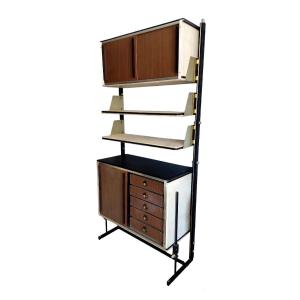


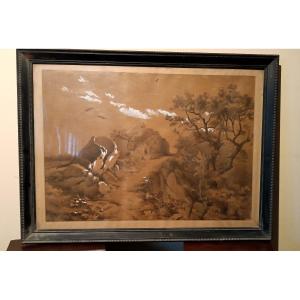


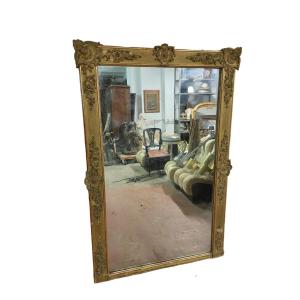


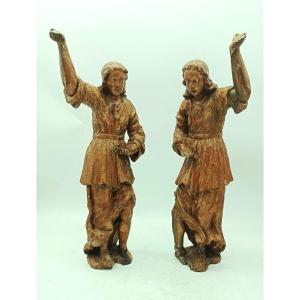




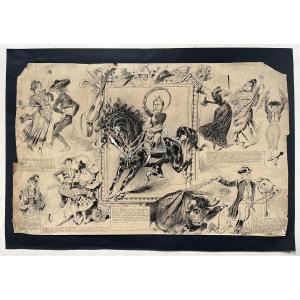






 Le Magazine de PROANTIC
Le Magazine de PROANTIC TRÉSORS Magazine
TRÉSORS Magazine Rivista Artiquariato
Rivista Artiquariato